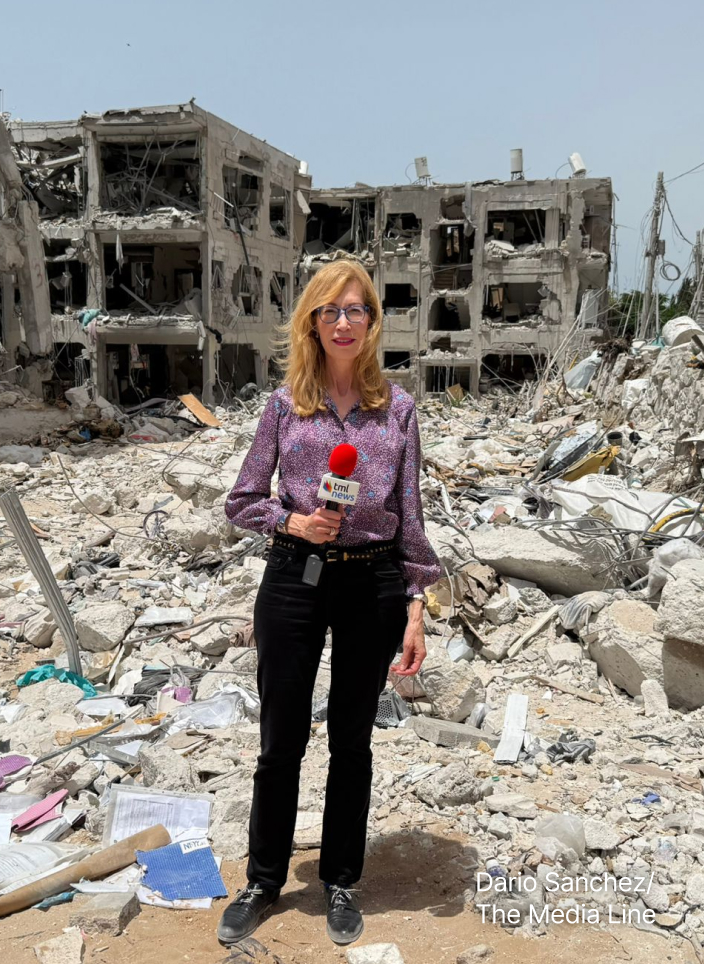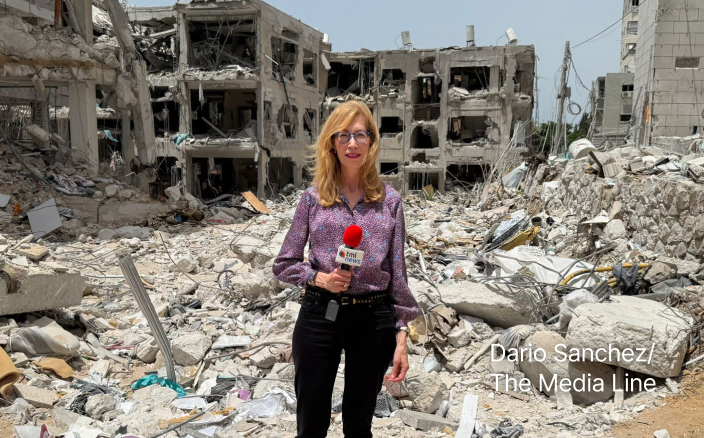Israeli companies Photuro and Mantis Vision unveil cutting-edge photo booth, which can render an affordable 3-dimensional avatar in seconds
Imagine jumping out of a helicopter, seeing what an outfit looks like before trying it on, or becoming a leading character in a favorite video game. The latest technology from high-tech companies Photuro and Mantis Vision is bringing consumers one step closer to realizing these visions. This week, Israel’s first-ever 3-dimensional photography booth was inaugurated at the Ayalon Mall in Tel Aviv and on its opening day, people were lining up to try it.
“A 3D camera contains all the depth information, meaning that from the image itself you can get the [exact] measurements of a person,” Shabtay Negry, Chief Business Officer (CBO) of Mantis Vision, explained to The Media Line. “If I capture you in 3D, I can get your height, your width, the thickness of your palm—everything is in the data and we can gather all the dimensions with high accuracy.”
The state-of-the-art kiosk contains 22 cameras and high-quality lighting. Those wishing to create their very own avatar need only to fill out a form, select the image specifications, step into the booth, and within seconds an accurate virtual model is sent to their smartphone.
Give the gift of hope
We practice what we preach:
accurate, fearless journalism. But we can't do it alone.
- On the ground in Gaza, Syria, Israel, Egypt, Pakistan, and more
- Our program trained more than 100 journalists
- Calling out fake news and reporting real facts
- On the ground in Gaza, Syria, Israel, Egypt, Pakistan, and more
- Our program trained more than 100 journalists
- Calling out fake news and reporting real facts
Join us.
Support The Media Line. Save democracy.


“You can scan yourself into different backgrounds and embed yourself within video games like Grant Theft Auto,” Ronen Hakimi, Co-Founder & CEO of Photuro, related to The Media Line.
“The sky is the limit.”
Up to five people can be photographed simultaneously, and the technology also enables people to create a personalized 3D-printed sculpture. Though these miniature statues are pricy—running anywhere from $60-$600—the virtual model costs only $12, which means almost everyone can their very computer icon.
While other companies—such as Shapify in the United States and Omote in Japan—offer a similar service, the Israeli technology differs by providing individuals with immediate access to their virtual image.
“If you tried to get your digital model from other companies, you would see that it’s much more difficult and it takes much more time,” Hakimi noted. “This technology allows you to receive your image in very high quality within minutes.”
It seems there is already a keen interest in the technology in a number of sectors, including robotics, shipping and—perhaps most notably—surveillance.
“[Let’s say] you have a database of suspected [criminals] that you would like to arrest. We can create a 3D database with our 3D cameras that can capture anyone trying to [get into a specific location] without them needing to be [motionless],” Negry explained. “[The technology] can capture the face and entire body and take a biometric signature [based on this information].”
Accordingly, some fear that the technology could, under certain circumstances, be used for nefarious purposes. As 3D images become increasingly sophisticated, creating fake video segments, for example, might one day be as simple as pressing a button. This could, in turn, produce an even greater preoccupation with the “fake news” phenomenon.
Overall, technological advancements are liable to blur the line between reality and fiction, leading to completely new forms of human interaction, both with products and among each other.
The question begs: Are we prepared for it?